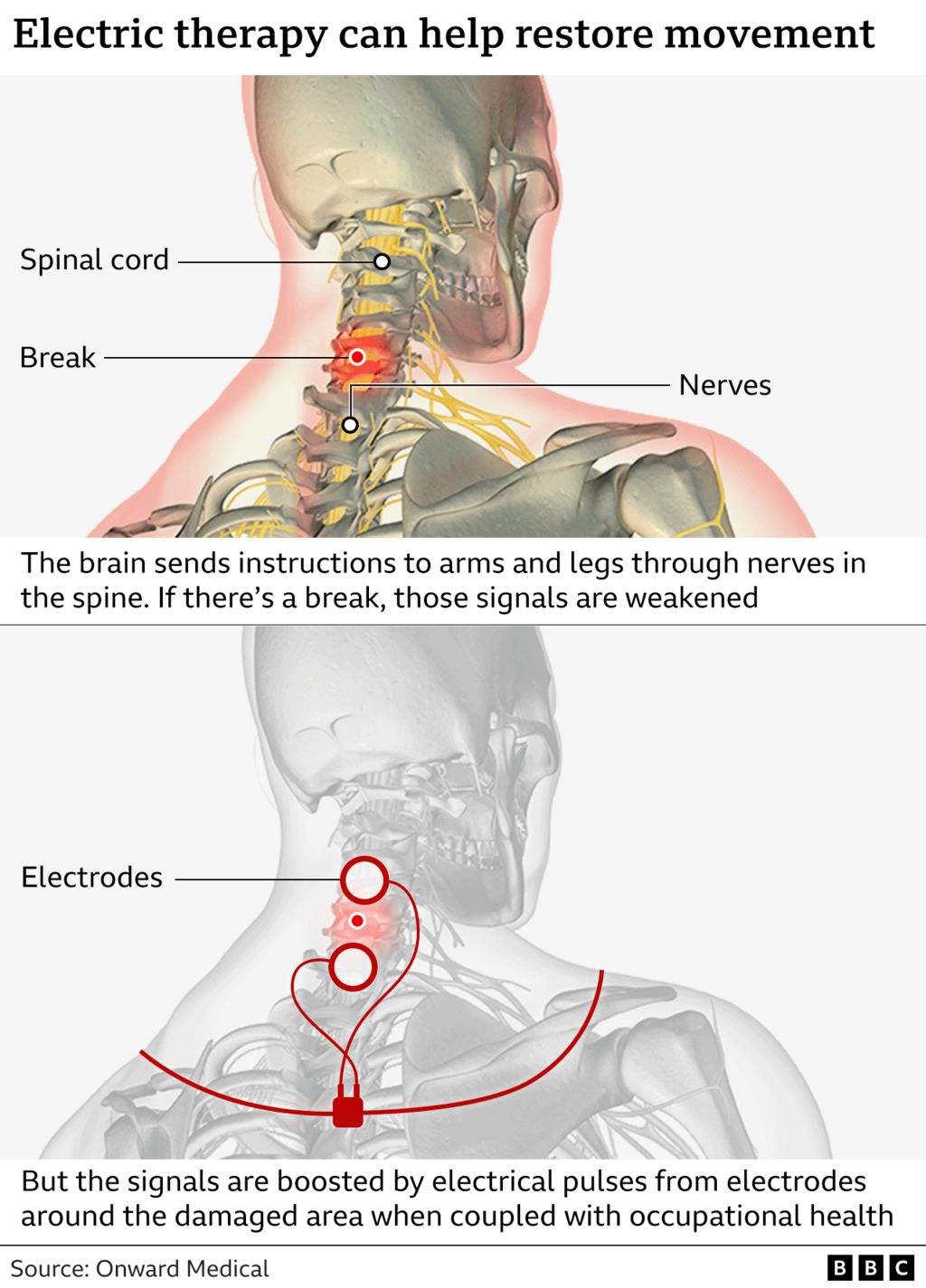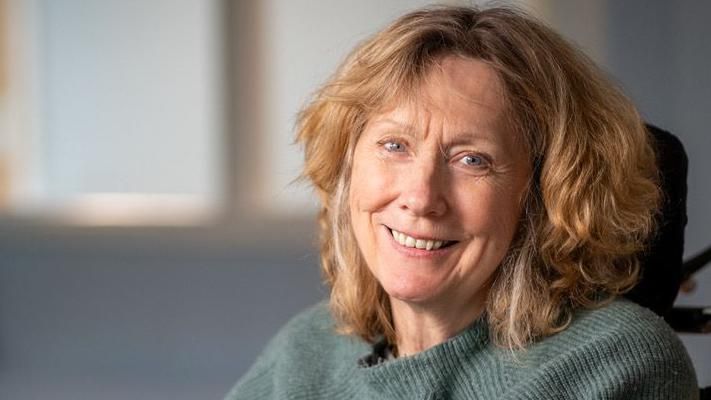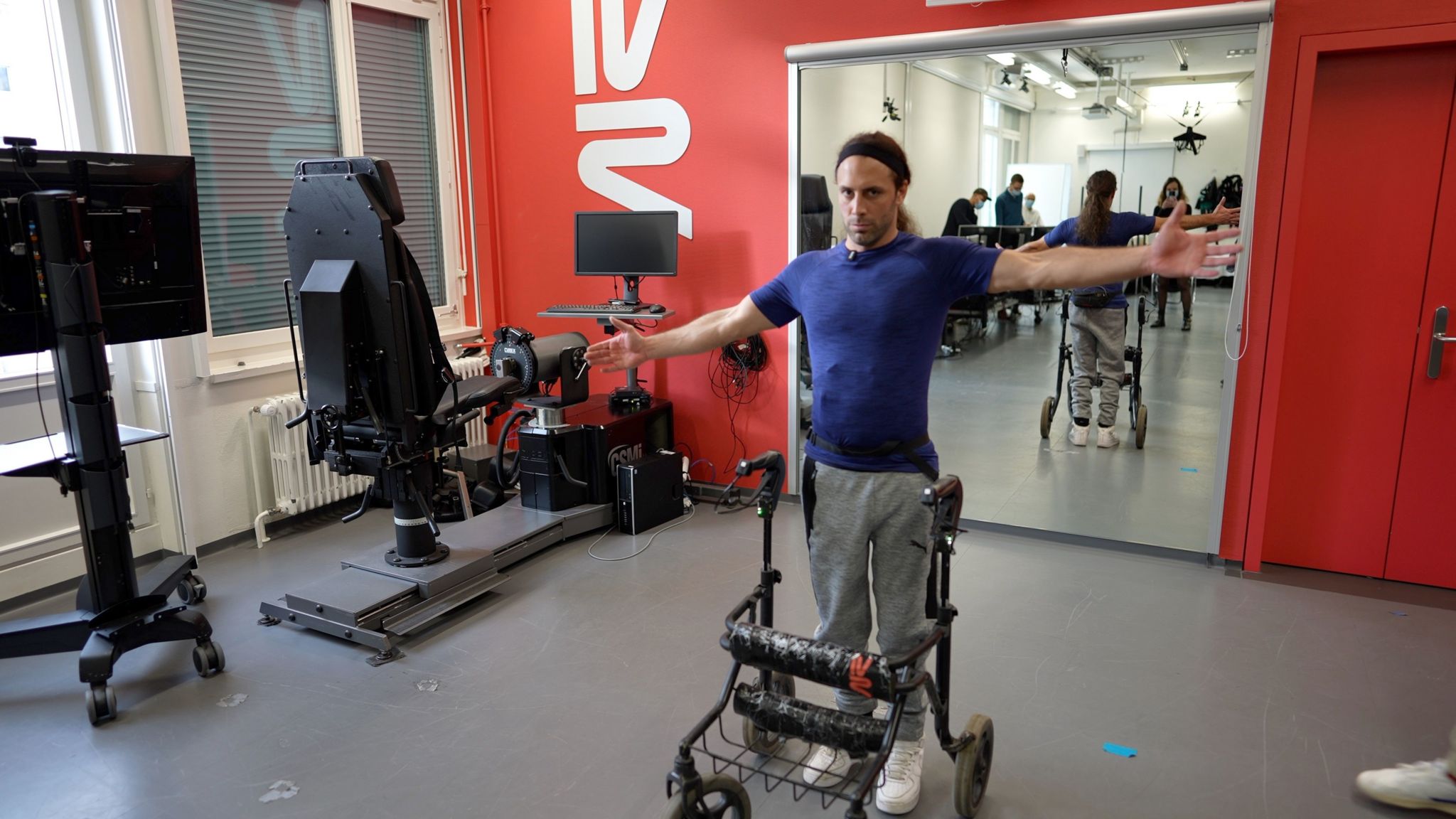Melanie Reid’s left hand had "flopped like a bunch of bananas" since she broke her neck in a horse-riding accident 14 years ago.
Now she can use it to scroll on a smartphone and undo her seatbelt following a ground-breaking new treatment using electrical pulses.
Combined with occupational therapy, it’s thought to be restoring some movement to people paralysed from the neck down. A study of the technique on 60 patients found that 43 showed some improvement in the use of their arms and hands.
The team is applying for regulatory approval to use their system to treat patients in hospitals in the US.

It works using electrodes attached around the affected area. High frequency pulses of electricity boost the impulses our brain sends to our hands and arms through our nerves, signals which in Melanie's case have been weakened by her spinal injury.

Melanie Reid has had small improvements to her hand movements that have made a big difference to her life
Melanie, 67, a journalist with the Times who lives in Stirlingshire in Scotland, is one of the first patients to try the new technique. The movement of her hands and arms were restricted, especially her left hand, which she couldn’t move at all.
She underwent two months of electrical pulses combined with intensive physiotherapy. She says it has led to some lasting small improvements which have made a big a difference to her daily life.
“I can undo my seatbelt with my left thumb, I now trust this hand to lift a cup of coffee, I can pick up small things and do tasks like straining rice with hot water," she told me.
While most of those in the trial had more movement with the device turned on, it is impossible to say yet how much of the longer-term improvements - when the patient isn't wearing it - are down to the electrical pulses and how much come from the occupational therapy.
“When you enrol someone into a study and pay a lot of attention to them over many months, there is going to be a certain amount of improvement,” said Prof Robert Brownstone, a surgeon and professor of neurology at University College London, who is independent of the research team.
Apart from the occupational therapy, the sense of hope and support from taking part in a potential treatment could also make a difference, he said.
Melanie said there were some things she could only do with the pulses turned on, like wringing water out of a facecloth and lifting objects, but that she felt the treatment had left her with a lasting improvement in strength.
“I can’t put the improvements all down to the electrical stimulation, but I feel they have been accelerated and encouraged by it," she said.
“There are no miracles in spinal injury [but] if this device is able to allow someone with tetraplegia to lift their arm to put food in their mouth or to have a drink, that is life-changing.”

The electrical pulse technique has been used previously to help paralysed people with lower back injuries walk again
Patients with spinal injuries have been shown to improve best soon after their injury. Those chosen for the study had their accidents between 1 and 34 years ago, with little or no improvement since their initial recovery.
Mariel Purcell, director of research of the Scottish Centre for Innovation in Spinal Cord Injury at Queen Elizabeth University hospital in Glasgow, has been treating Melanie ever since her injury 14 years ago.
Her unit was invited onto the study because it is a world-leading research centre in the field.
She said she's never seen such progress with an injury sustained such a long time before.
“At the moment there isn’t any single drug or device that’s been approved and is of clinical benefit to patients,” she said.
The device is the latest development of work by a Swiss team, co-led by Prof Gregoire Courtine of the EPFL medical research lab in Lausanne. So far, they’ve helped 26 people with spinal injuries below the neck walk again using surgically implanted devices stimulating the spine - but so far only in lab tests.
The new system, which requires no surgery, is also the team’s first effort to find a treatment for people with broken necks, who have lost movement in their arms.
Prof Courtine has published evidence that electrical stimulation coupled with physiotherapy does result in some limited repair of the damaged nerves.
“We are so close to bringing life changing technology to these patients,” he told BBC News.
The US regulator, the Food and Drug Administration (FDA) is studying the data from the clinical study, which has been published in the journal Nature Medicine, external, to assess whether the technique is safe and the benefit is significant.
If the agency is satisfied, it will issue a licence for a medical device based on the technology, developed by a commercial spinoff company, Onward Medical, to be used to treat tetraplegics in American hospitals.
If the device gets the go ahead in the US, then the team behind the technology will apply for its use in other parts of the world.
From BBC
